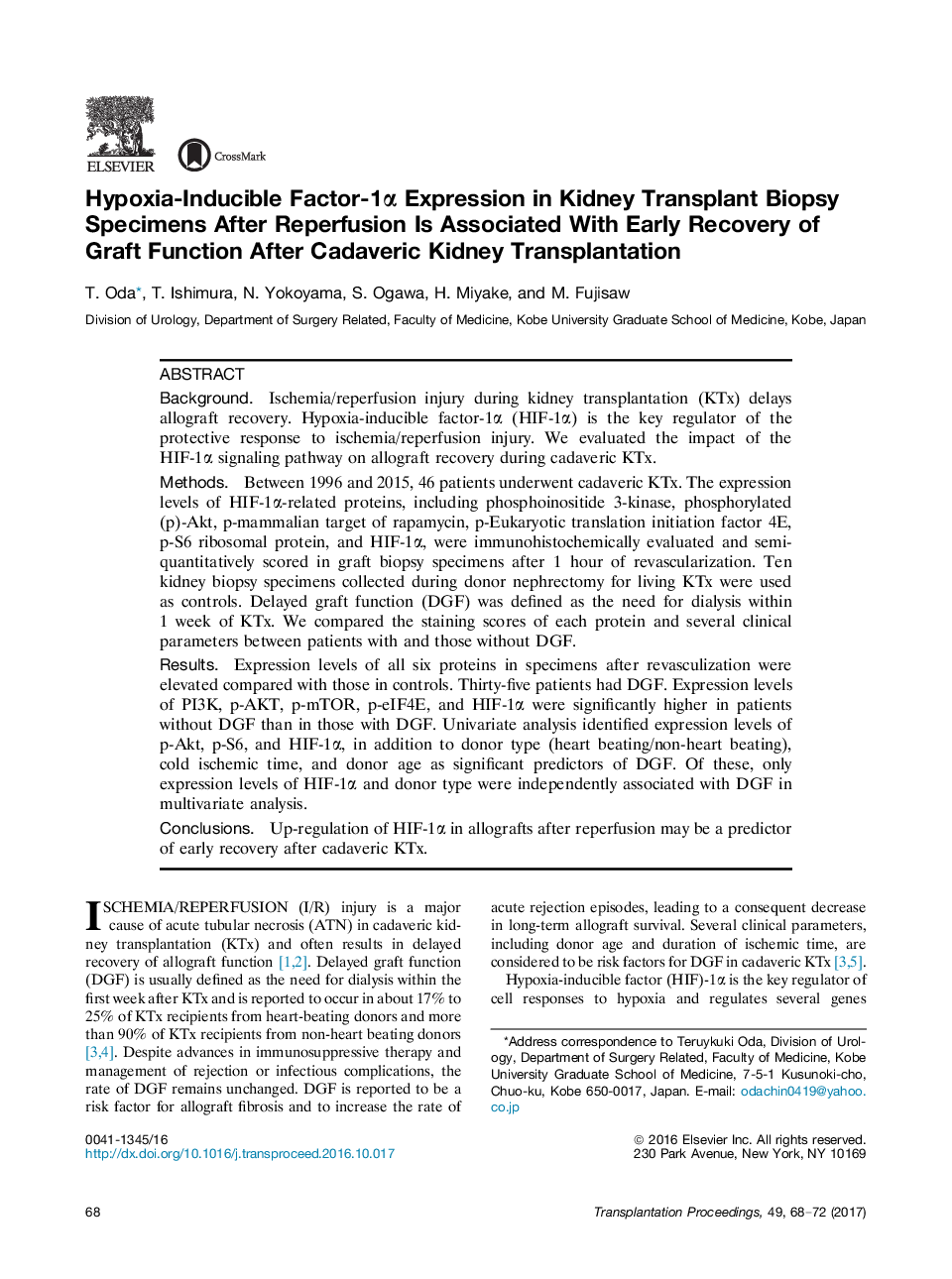| کد مقاله | کد نشریه | سال انتشار | مقاله انگلیسی | نسخه تمام متن |
|---|---|---|---|---|
| 5729291 | 1411679 | 2017 | 5 صفحه PDF | دانلود رایگان |

BackgroundIschemia/reperfusion injury during kidney transplantation (KTx) delays allograft recovery. Hypoxia-inducible factor-1α (HIF-1α) is the key regulator of the protective response to ischemia/reperfusion injury. We evaluated the impact of the HIF-1α signaling pathway on allograft recovery during cadaveric KTx.MethodsBetween 1996 and 2015, 46 patients underwent cadaveric KTx. The expression levels of HIF-1α-related proteins, including phosphoinositide 3-kinase, phosphorylated (p)-Akt, p-mammalian target of rapamycin, p-Eukaryotic translation initiation factor 4E, p-S6 ribosomal protein, and HIF-1α, were immunohistochemically evaluated and semi-quantitatively scored in graft biopsy specimens after 1 hour of revascularization. Ten kidney biopsy specimens collected during donor nephrectomy for living KTx were used as controls. Delayed graft function (DGF) was defined as the need for dialysis within 1 week of KTx. We compared the staining scores of each protein and several clinical parameters between patients with and those without DGF.ResultsExpression levels of all six proteins in specimens after revasculization were elevated compared with those in controls. Thirty-five patients had DGF. Expression levels of PI3K, p-AKT, p-mTOR, p-eIF4E, and HIF-1α were significantly higher in patients without DGF than in those with DGF. Univariate analysis identified expression levels of p-Akt, p-S6, and HIF-1α, in addition to donor type (heart beating/non-heart beating), cold ischemic time, and donor age as significant predictors of DGF. Of these, only expression levels of HIF-1α and donor type were independently associated with DGF in multivariate analysis.ConclusionsUp-regulation of HIF-1α in allografts after reperfusion may be a predictor of early recovery after cadaveric KTx.
Journal: Transplantation Proceedings - Volume 49, Issue 1, JanuaryâFebruary 2017, Pages 68-72